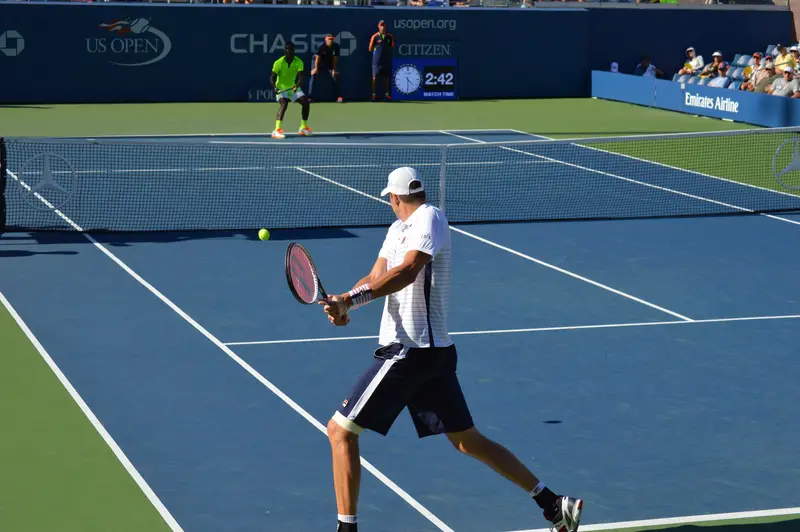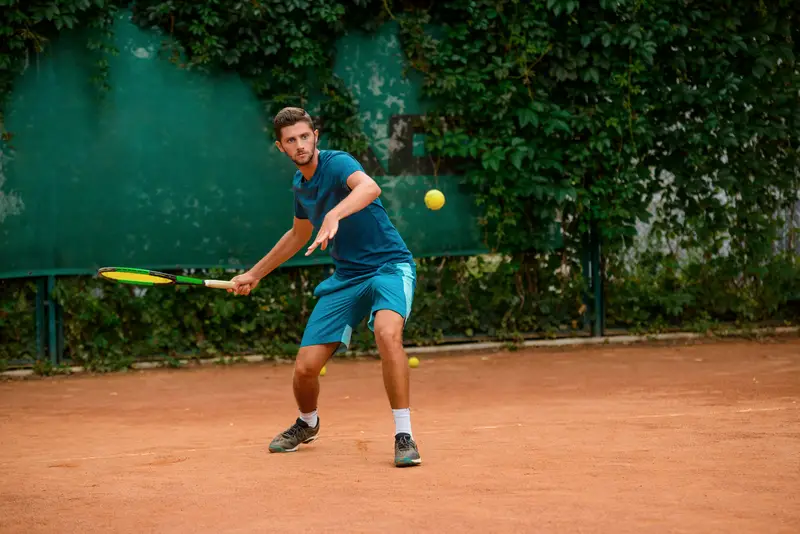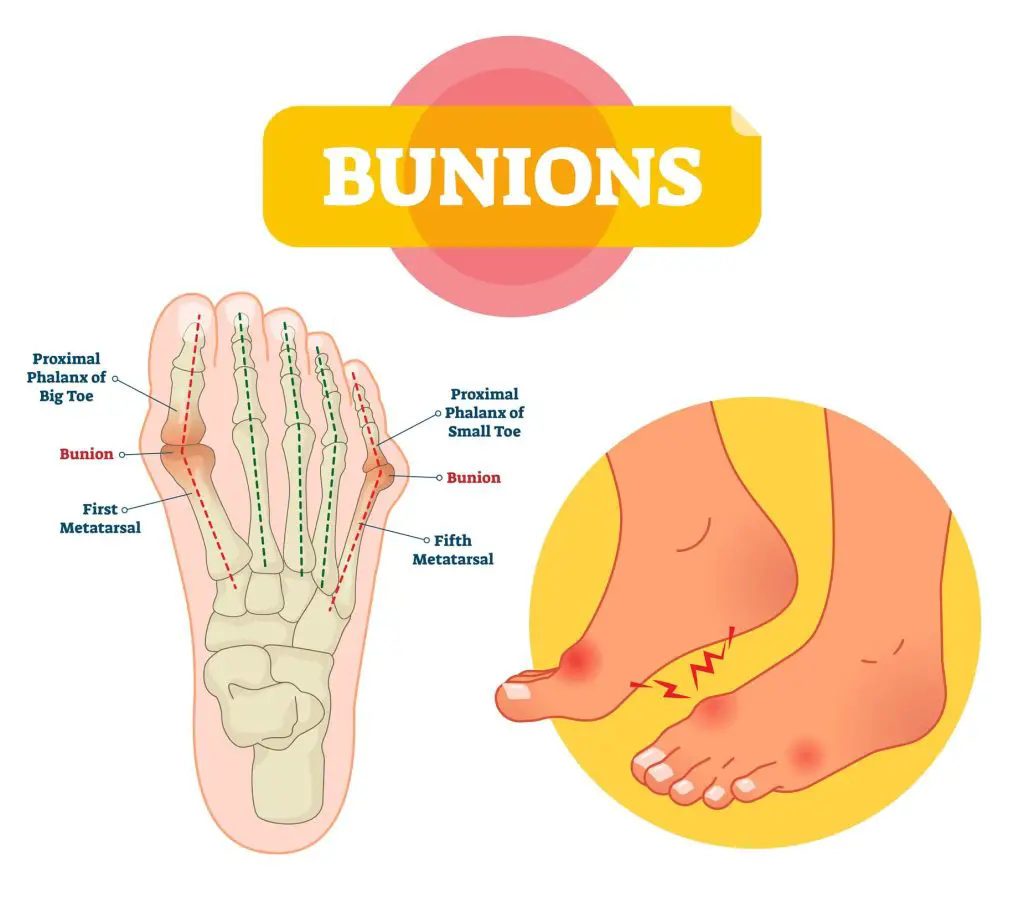- Whenever you see players thrashing the ball back and forth on a tennis court, this is called a ‘rally’.
- Once the serve goes into the right box and the serve is returned in the court, the rally has started.
- Rally involves volleys, drive volleys, overheads, drop shots, forehands, and backhands, making the game unpredictable and exciting.
Your Guide
 Gavin Davison
Gavin Davison
Of course, rally structures and lengths can vary quite significantly, but at the very fundamental level, it’s all about consistently hitting a ball in the court between two or four players.
When kids are starting out in tennis, you’ll often hear coaches asking them to rally their age, which is something that is used as a good baseline for the kid’s progression and skill level.

As an adult or a more advanced junior, coaches will start to introduce patterns of plays in rallies and
Why these should be used?
This is actually a topic that is more in-depth than you might initially think, so let me cover some of the more complex details.
A Breakdown Of A Tennis Rally
The Serve
In competitive tennis, a rally always begins the same way, with one player hitting a serve.
Of course, the serve needs to land in the diagonal box opposite their side, and a player has two attempts to do this successfully.
If a player misses both serves, they have hit a ‘double fault’, and no rally will actually take place. But if a player does hit either the first serve or second serve into the box, the rally is now started.
With that said, if the server hits a very powerful and precise serve, there is always the chance that this would result in an ace or an unreturned serve.
The Return
Assuming the serve goes into the right box, the rally is live, and it’s then up to the opposing player to return the serve. In tennis, a lot of time you will hear players talk about the importance of the serve and the return.
And I must agree with them – the serve, alongside the return, are the two most important strokes in the game.
For returning, a player is usually looking to block the ball back to a decent length from a first serve, therefore neutralizing the play.
But for a second serve, the returner can usually look to be more aggressive and try to dominate the rally from the get-go.
Of course, this all depends on how good the serve is, and how confident the returner feels with their skills to take control of the point.
Currently, we live in a blessed era of tennis, and it just so happens that Novak Djokovic is the best returner of serve that there has ever been.
He has truly mastered the art, and he is also responsible for what many people call ‘the best return’ ever – check it out here:
The reason this is viewed as one of the best ever is that he then went on to win the trophy, having faced these two match points against the great Roger Federer.
The Rally Itself
If the serve goes well, and the return is subsequently hit into the court, the rally is now well underway.
From here, it’s all about who can outsmart, outhit, and outmaneuvered their opponent to ultimately win the rally and the point.
The rally will always consist of forehands and backhands, but it could also involve volleys, drop shots, drive volleys, as well as overheads.
It all depends on how the rally plays out, and since no rally is ever the same, this makes the game of tennis particularly enjoyable and unpredictable.
4 Top Tips on winning a tennis rally
To focus solely on our topic here, which is the rally, I will be skipping past the serve and return.
Instead, I’ll be focusing on general tips you can use to turn the rally in your favor:
1) Play to the Opponent’s Weakness
Everybody has a weakness in their game, you’ve just got to find it!
Once you have figured this out, it’s time to pressure the opponent on this weakness, as this will create a better chance that they might hit an unforced error.
Most players’ backhand will be weaker than their forehand, BUT NOT ALWAYS!
That’s why you’ll often see players going after their opponent’s backhand in both men’s and women’s tennis.
2) Keep a Good Length on Your Shots
I can always remember the first coach I ever had told me this. He used to say that if you hit your groundstrokes within a meter or so of the baseline.
I kept this advice with me throughout my career, and I must say – he was right.
How could the opponent then attack you?
With that said, you won’t be trying to hit all of your shots deep in the court, for it’s important to work your opponent around the court with the use of angles too.
But if you are just trading from the baseline, it’s a good idea to keep your length and then wait for the right ball to attack.
3) Vary the Shots
This is something that isn’t used enough in tennis. I can say this WITH ABSOLUTE CONFIDENCE, as I’ve witnessed players at all levels fall victim to the same mistake.
If you always hit the same type of shot, over and over again, the opponent will get used to it and then you won’t be able to surprise them with anything.
Therefore, why not mix up the speed of your groundstrokes, the height, and also adjust your position to give them a different view too?
4) Play to Your Strengths
Just as you need to play to your opponent’s weaknesses, you need to PLAY TO YOUR STRENGTH.
For example, if you have a great down-the-line forehand, it wouldn’t make much sense to constantly hit your forehand cross-court!
It’s important that you know with absolute certainty what your strengths are too, as this will prove pivotal in your strategies and patterns of play.
My conclusion
I hope that this has helped you grasp what a rally entails, as well as provided insight into some of the more intricate details.
I also hope that you can then use the tips I have given and introduce them into your own game, and I firmly believe that your tennis level will rise as a result of what I have talked about here.
Did you enjoy the piece? Feel free to add your comments below or share this piece with friends or family who might also find this information useful.



You are so interesting! I don’t think I have read through something like this before. So great to find somebody with some unique thoughts on this topic.